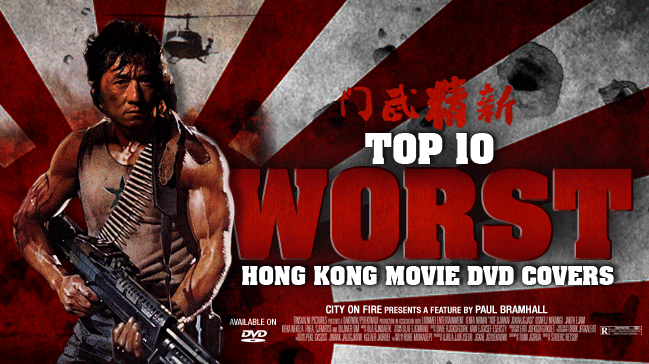
Warning: This Article May Cause Discomfort for the Eyes
Marketing Hong Kong movies to a western audience has always been a tricky business, especially when it comes to DVD releases. Amongst the countless latest Hollywood titles fighting for your attention and shelf space, arguably the most important asset a DVD can have is an attention grabbing cover. Hong Kong movies in particular have been subjected to some ‘interesting’ design choices since the inception of the DVD format, and while plenty of titles have been released with artwork that captures the essence of the movie perfectly, those aren’t what this article is about. Instead, we’re going to take a look at some of the worst cover designs that the movies we love have been stuck with, whether it be questionable design choices, completely misleading images, or the just plain bizarre, take a look at the list below and see if you agree.
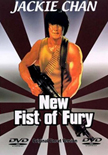 1. New Fist of Fury
1. New Fist of Fury
Released by Beverly Wilshire in 2001
In 1976 Jackie Chan was still relatively unknown, and his contract under Lo Wei saw the director trying to style Chan as a character in the vein of Bruce Lee. What Lo Wei can never be accused of though, is attempting to style him as a Chinese version of Rambo (by pasting Jackie’s head on Stallone’s body from the First Blood poster), which is what seems to be the message being conveyed on the cover of this 2001 release of the movie. Sporting a legless (literally, not the drunken kind) Chan set against the backdrop of the Japanese Imperial Flag, the fact that he’s brandishing a huge machine gun, complete with a belt of bullets wrapped around his torso, gives no indication to the old-school kung fu movie behind the title. Still, the designer of the cover certainly can’t be accused of not being creative. Note: The artwork originally appeared on the film’s 1985 VHS release by All Seasons Entertainment.
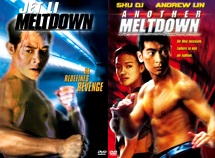 2. Meltdown/Another Meltdown
2. Meltdown/Another Meltdown
aka High Risk/The Blacksheep Affair
Both released by Sony Pictures in 2001
Poor Jet Li and Vincent Zhao, not only do each of their respective movies here have nothing to do with each other, but they both had their heads poorly photoshopped onto the body of other Hong Kong stars. Clearly doing a Google search of ‘muscular Asian body’ wasn’t enough for Sony, so here we have Jet Li’s head stuck on top of Donnie Yen’s body, and Vincent Zhao’s head stuck on top of Bruce Lee’s body. Ironically Zhao doesn’t even get billing on the cover, instead having Shu Qi and Andrew Lin steal his limelight. As for Meltdown, a re-title of High Risk, the cover gives no allusion to the fact that the movie is in fact a zany mix of Die Hard meets a satire of Jackie Chan, with Jacky Cheung aping the stars claims to perform all his own stunts.
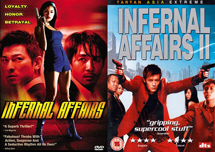 3. Infernal Affairs/Infernal Affairs 2
3. Infernal Affairs/Infernal Affairs 2
Released by Miramax in 2004/Tartan in 2005
With the original Infernal Affairs being a taut thriller played out between a cop working undercover as a triad, and a triad working as a mole in the cops, you would never guess from the cover Miramax decided to place on it. If anything, you would presume it’s about a love triangle between Andy Lau, Tony Leung, and a generic Asian female holding a gun. Generic Asian Female – 1, Integrity of the movie – 0.
The sequel to Infernal Affairs is unique in that it’s just as good as the original, however it’s certainly not an action flick. Thankfully proceedings play out in such a way that at one point, a minor character played by Chapman To, breaks out a pair of handguns and starts blasting away. It’s a brief flash of violence, but it gave Tartan Video the solution they needed. Take a screenshot of To in action, then awkwardly photoshop one of the movies main stars, Shawn Yue, onto his body for the DVD cover. The resulting composition has Yue seemingly with no neck, with Edison Chen menacingly feeling his butt from behind.
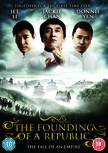 4. The Founding of a Republic
4. The Founding of a Republic
Released by Metrodome Group in 2011
This pompous overly long movie was commissioned by the Chinese government in 2009 to mark the 60th anniversary of the People’s Republic of China. Telling the tale of how the Communist party rose to triumph, it was notable for having cameo appearances by just about every actor working in the Chinese/Hong Kong movie industry you can think of. Amongst those cameos were Jackie Chan, Jet Li, and Donnie Yen. The resulting release by Metrodome Group sneakily saw them use the trio’s names as headlining stars, photoshopping them to wear matching white kung fu garments, with their images above a traditional Chinese landscape. Enticing as the cover may seem, it couldn’t misrepresent the movie anymore if it tried.
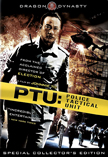 5. PTU: Police Tactical Unit
5. PTU: Police Tactical Unit
Released by Dragon Dynasty in 2008
Johnnie To’s quietly enthralling 2003 police thriller was released by the Weinstein’s Dragon Dynasty label 5 years later, and they’ll be damned if they’re going to believe anyone would be interested in buying such a movie. So instead of creating a cover which represents what PTU is actually about, we get a photoshopped Simon Yam brandishing a pistol in each hand, an exploding building behind him, and a helicopter that may or may not be the reason why the building is exploding (it is flying pretty low). Anyone wanting to find answers to the events playing out on the cover by watching the movie would be sourly disappointed, as none of them actually happen, but as the expression goes, never let the truth get in the way of a good story!
 6. Jackie Chan and his Black T-Shirt
6. Jackie Chan and his Black T-Shirt
Released by – too many to mention
The legend of Jackie Chan and his black t-shirt has many variations, the most popular one seems to be that at some point during the late 90’s/early 00’s, he did a photo shoot to promote his image as an action star in the States. Since then, images of Chan and that damn black t-shirt have appeared on so many of his movies DVD covers, that there’s enough to make a separate Top 10 all together. But we won’t. Instead, check out the thumb nails to flick through a fashion catalogue of Chan and his favorite t-shirt, being used on everything from Project A to Police Story. Possibly the most iconic piece of clothing since the white vest Bruce Willis wore in Die Hard?
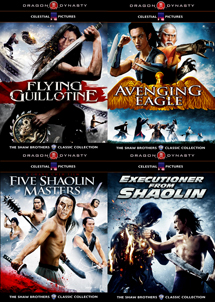 7. Dragon Dynasty Shaw Brothers Releases
7. Dragon Dynasty Shaw Brothers Releases
Released by Dragon Dynasty in 2011
While some of the Shaw Brothers movies that were put out on the Dragon Dynasty label sported perfectly suitable covers, others veered off into the bizarre. Take the cover of Five Shaolin Masters for example, who exactly is that in the centre of the cover!? Why is Fu Sheng brandishing nunchucks!? What’s Gordon Liu doing there!? Then you have Avenging Eagle. So Fu Sheng is fine to appear on the cover of Five Shaolin Masters, but here his sleeve blade wielding character has his face replaced by…who even is that!? It looks like some strange composite of several actors faces put together. The same strange characters seem to appear on both the covers for Flying Guillotine (Chen Kuan Tai after going through some Mickey Rourke style procedures?) and Executioner from Shaolin, which has someone that looks like Norman Chu destroying a dummy with a flaming fist. Great.
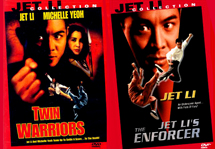 8. The Jet Li Collection
8. The Jet Li Collection
Released by Dimension in 2000
The only thing worse than the re-titled, cut up, dubbed, and newly scored versions of these movies which were put out by Dimension, were the covers that came with them. Featuring scenes from different movies (The Enforcer has a scene from Fists of Legend on its cover, while Twin Warriors features an image of Michelle Yeoh in Project S, re-positioned in what we’re supposed to believe is a flying kick). Burdened with tag lines that reference every cliché in the book, from Fists of Fury to my personal favorite – ‘Loyalty. Honor. Vengeance’. If anyone was foolhardy enough to pick up one of these DVD’s, they quickly learned that the only collection these releases deserved to be a part of, was the one pre-faced with the word ‘garbage’.
 9. Ninja Masters
9. Ninja Masters
aka: Coweb
Released by Lions Gate in 2013
In 2008 a new female kung fu talent made her debut with Coweb, a tale of underground fight tournaments that are broadcast on the web, and featuring some solid kung fu talent in the form of opponents like Kane Kosugi and Mike Moller. The modern day set actioner was picked up by Lions Gate, and released in 2013 under the bizarre title of Ninja Masters. Featuring a DVD cover with a male dressed in full ninja garb, and a pagoda in the background, Coweb feature zero ninjas or pagodas, nor is it from Japan. Sporting the tagline ‘They are the Perfect Weapon’, to further mislead buyers, one can only wonder what someone who bought this would think, once they find it’s a tale of a tough femme fatale battling it out in modern day Hong Kong.
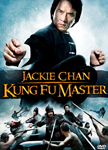 10. Kung Fu Master
10. Kung Fu Master
aka: Looking for Jackie
Released by Phase 4 Films in 2010
Jackie Chan marks his fourth appearance on the list, this time for his 2009 Chinese family drama Looking for Jackie. The family friendly tale of a teenage boy who goes off to find Jackie Chan in Beijing, believing he’ll be able to learn kung fu from him, the movie is a torture to get through, and what’s more, features Chan for just a few mere minutes at the end. Undeterred by this, Phase 4 Films picked up the title in 2010 and released it under the name Kung Fu Master, featuring a gigantic Jackie Chan who’s about to kick a bunch of miniature sized battling soldiers and monks into oblivion. Needless to say, anyone who was expecting to see kung fu, Jackie Chan, or miniature sized soldiers and monks would be left feeling severely misled.
That wraps up the list, but we’d love to hear what some of your personal picks are for the worst DVD covers that Hong Kong movies have been subjected to? Who knows, perhaps we’ll get enough for a Part 2. Now, where did I leave my black t-shirt?


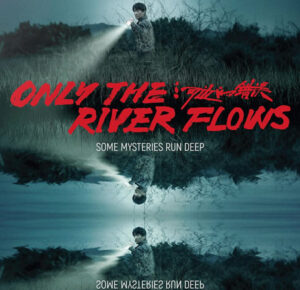


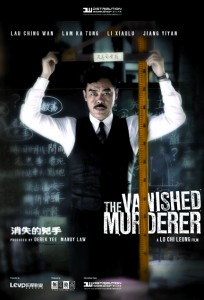
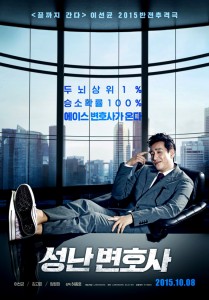
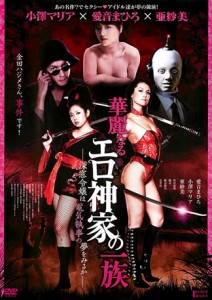
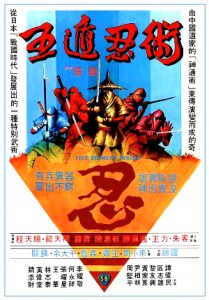
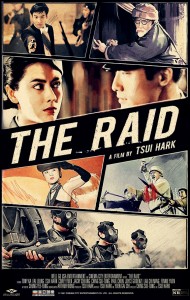
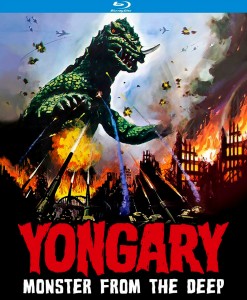
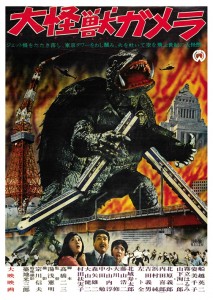
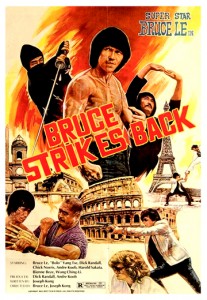











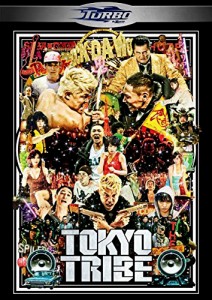
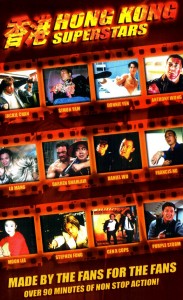
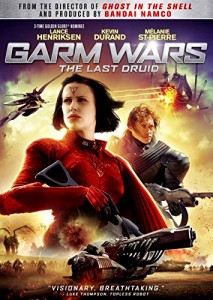
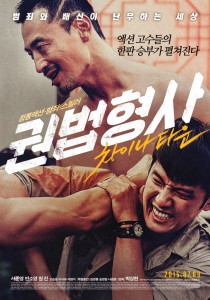



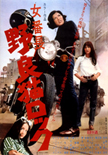



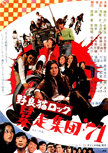
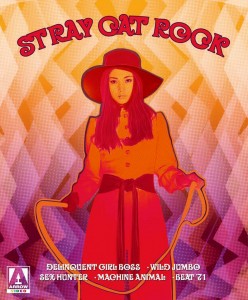



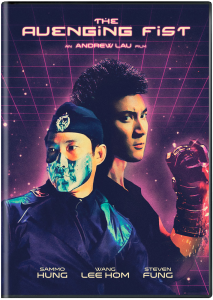



1 Comment